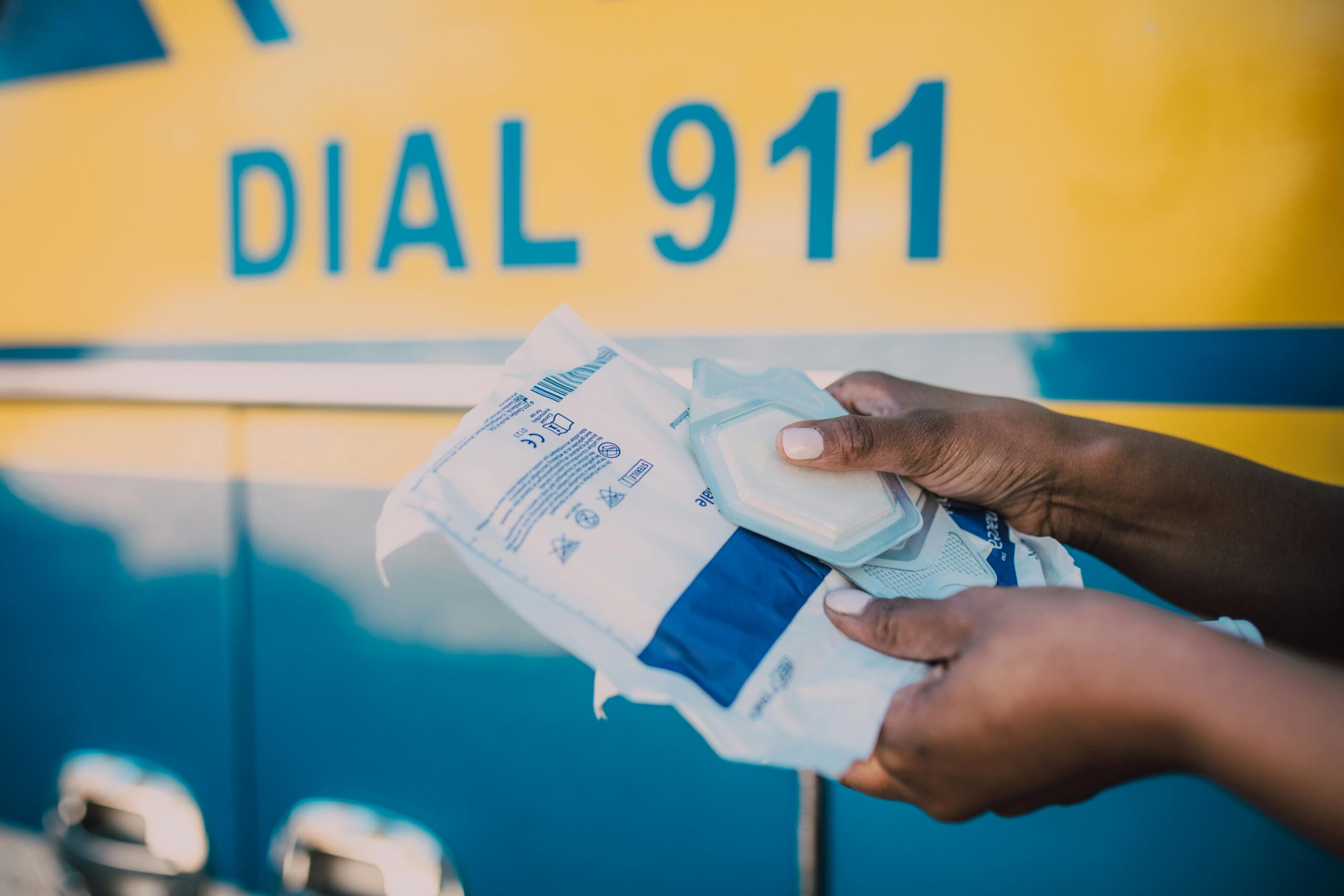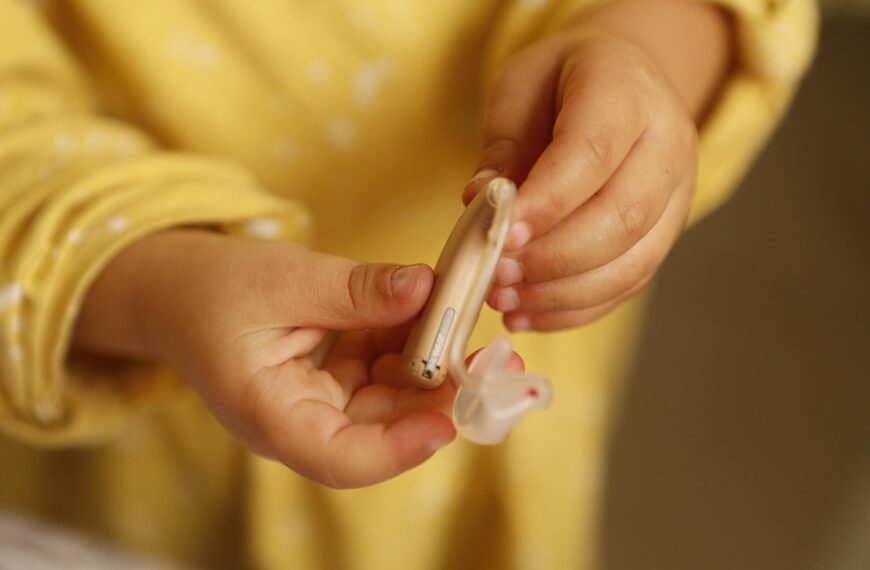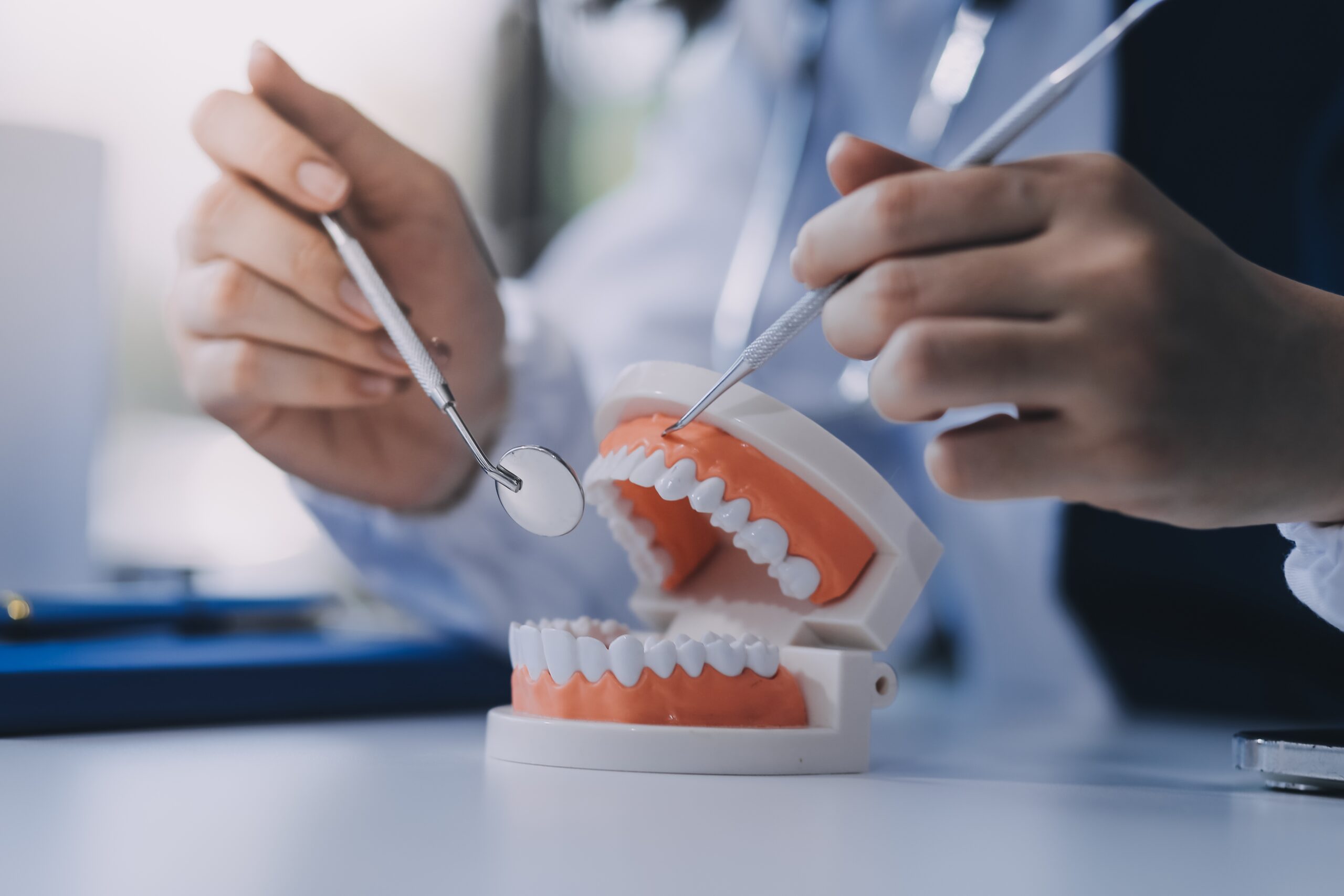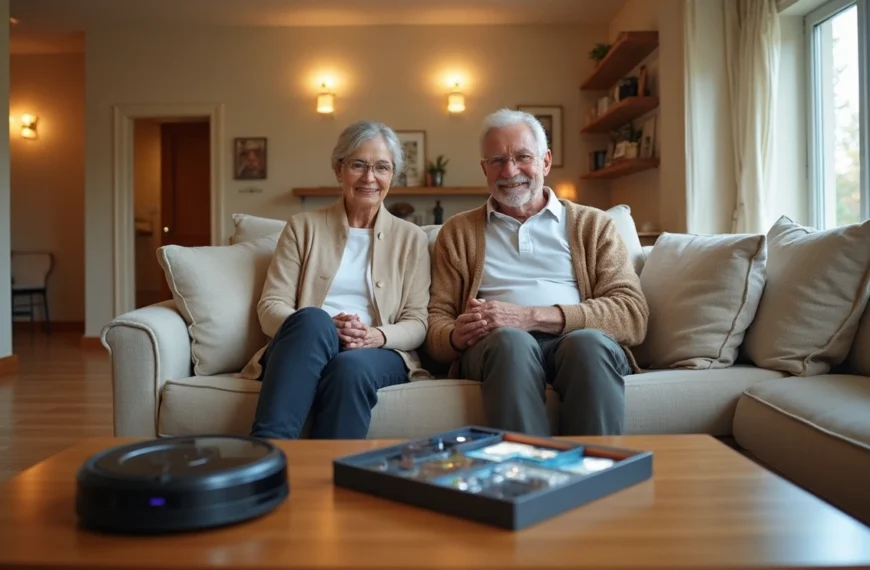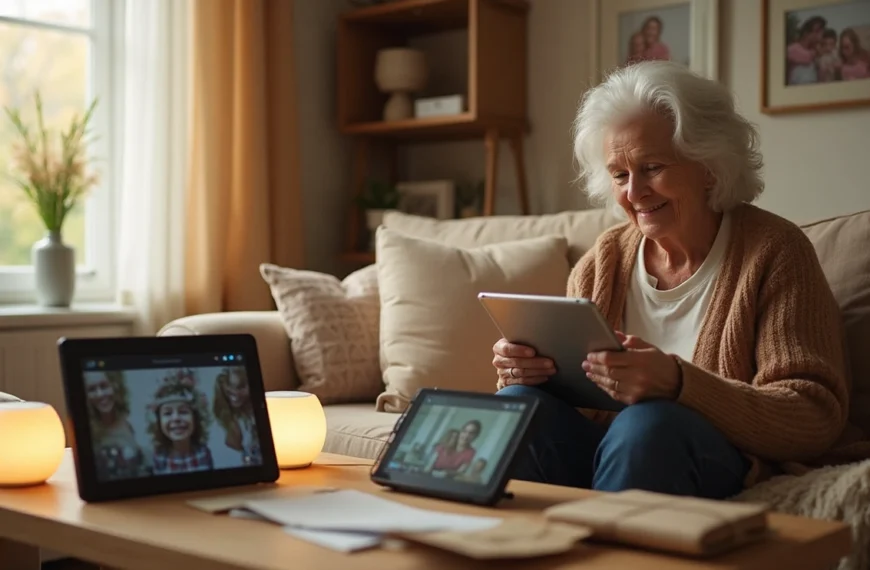
Image Source: Amazon.com
As seniors age, ensuring their safety and providing peace of mind for both them and their families becomes increasingly important. One of the best ways to achieve this is through medical alert systems for seniors. These systems are designed to provide immediate assistance in case of emergencies, such as falls, medical issues, or any situation where a senior might need urgent help.
Medical alert systems have evolved significantly over the years, offering a wide range of features and functionalities tailored to meet the needs of seniors. They are not only lifesaving devices but also contribute to the overall well-being of seniors by allowing them to maintain their independence while having a safety net.
In this ultimate guide, we will explore the various aspects of medical alert systems, from understanding why they are necessary to selecting the best options available. By the end, you will have a comprehensive understanding of how to choose the most appropriate system for your loved ones.
Why Seniors Need Medical Alert Systems
The need for medical alert systems becomes apparent when considering the increased risk of accidents and health issues that accompany aging. Falls are the leading cause of injury among seniors, and a quick response can significantly reduce the severity of these accidents. Medical alert systems ensure that help is just a button press away, reducing response times and potentially saving lives.
Moreover, many seniors live alone or spend a significant amount of time without direct supervision. In such cases, a medical alert system acts as a crucial lifeline, providing assurance that in the event of an emergency, they can quickly contact emergency services or family members.
Beyond physical safety, these systems also offer emotional comfort. Knowing that assistance is readily available at any time alleviates anxiety and allows seniors to live more freely and confidently. This peace of mind extends to family members as well, who can rest easy knowing their loved ones have access to immediate help if necessary.
Understanding Different Types of Medical Alert Systems
Medical alert systems come in various forms, each designed to cater to specific needs and preferences. Here, we categorize them into three main types: in-home systems, mobile systems, and hybrid options.
- In-Home Systems: These systems are ideal for seniors who primarily stay at home. They typically include a base unit that connects to a landline or cellular network and a wearable device, such as a pendant or bracelet, that allows the user to call for help within a specified range.
- Mobile Systems: For more active seniors who often leave their homes, mobile systems are a suitable choice. These systems use cellular technology to provide coverage on the go, allowing users to call for help from virtually anywhere. They often come with GPS tracking, which is invaluable for locating the user during an emergency.
- Hybrid Systems: Combining features of both in-home and mobile systems, hybrid solutions offer comprehensive protection for seniors who split their time between home and outside activities. They provide the flexibility and coverage required for a dynamic lifestyle.
Understanding these types will help in selecting the right system that aligns with the senior’s lifestyle and needs, ensuring they receive maximum benefit from the technology.
Key Features to Look for in Medical Alert Systems for Seniors
When evaluating medical alert systems for seniors, several critical features should be considered. These features can greatly influence the effectiveness and user experience of the system.
- Ease of Use: The system should be user-friendly, with simple controls and an intuitive design. Seniors should be able to operate the system without difficulty, especially in high-stress situations.
- Battery Life: Reliable battery life is crucial. Systems should offer long-lasting batteries, and ideally, provide alerts when the battery is low to prevent downtime.
- Water Resistance: Since many accidents occur in bathrooms, a water-resistant or waterproof device ensures that the system can be used in all areas of the home, including wet environments.
- Range and Connectivity: For in-home systems, a strong connection between the base unit and wearable device is essential. Mobile systems should offer broad coverage and strong connectivity, regardless of location.
- Fall Detection: Some systems come equipped with automatic fall detection, which senses when a fall occurs and automatically contacts emergency services. This feature is particularly beneficial if the senior is unable to press the help button.
By prioritizing these features, families can select a medical alert system that best meets the needs of their senior loved ones, providing both safety and convenience.
Comparing Medical Alert Systems with No Monthly Fee
While many medical alert systems require a monthly fee for monitoring services, there are options available that do not carry this recurring cost. Understanding the differences between these systems can help in making a cost-effective decision.
Systems with No Monthly Fee:
- Self-Monitored Systems: These systems do not involve professional monitoring. Instead, when the help button is pressed, the system contacts pre-programmed numbers, such as family members or friends. This can be a budget-friendly option for those who prefer to handle emergencies within their own network.
- One-Time Purchase Systems: Some systems allow users to buy the equipment outright without ongoing fees. These are typically self-monitored and rely on the user’s contacts for emergency assistance.
Pros and Cons:
- Pros:
- Cost-effective over time with no monthly charges.
- Users have control over who is contacted during an emergency.
- Cons:
- Lack of professional monitoring means response times may vary.
- Relies heavily on the availability and proximity of contacts.
When choosing between these systems, consider the level of monitoring required and the reliability of personal contacts to ensure the senior’s safety is not compromised.
The Benefits and Drawbacks of Medical Alert Necklaces for Seniors
Medical alert necklaces for seniors offer a convenient and accessible form of emergency communication. These devices are typically worn around the neck, ensuring they are always within reach.
Benefits:
- Accessibility: Worn around the neck, these devices are easy to access and use, even in a compromised state.
- Discreet Design: Many medical alert necklaces are designed to look like regular jewelry, offering a discreet way for seniors to carry emergency assistance without drawing attention.
- Fall Detection: Many necklaces include built-in fall detection, which automatically alerts emergency services if a fall is detected, a vital feature for seniors prone to falls.
Drawbacks:
- Comfort: Some seniors may find wearing a necklace uncomfortable, especially when sleeping. This can lead to inconsistent usage.
- Visibility: While the discreet design is a benefit, it can also be a drawback if the device is not easily visible to others during an emergency.
- Limited Features: Compared to more advanced systems, necklaces may offer fewer features, such as GPS tracking or mobile connectivity.
Balancing these benefits and drawbacks will help in deciding if a medical alert necklace is the right choice for a senior’s needs.
How to Choose the Right Medical Alert System for Your Needs
Choosing the right medical alert system involves a thoughtful assessment of the senior’s lifestyle, health conditions, and personal preferences. Here’s a step-by-step guide to help make an informed decision:
Step 1: Assess Needs
- Lifestyle: Determine whether the senior is mostly homebound or active outside the home. This will guide whether an in-home, mobile, or hybrid system is most appropriate.
- Health Conditions: Consider any medical conditions that might necessitate specific features, such as fall detection for those prone to falls.
Step 2: Evaluate Features
- Essential Features: Identify which features are non-negotiable, such as GPS tracking, water resistance, or 24/7 monitoring.
- User-Friendly Design: Ensure the system is easy to use and understand, with a straightforward setup.
Step 3: Compare Systems
- Cost: Compare the initial costs and any ongoing fees. Consider systems with no monthly fees if budget is a concern.
- Reputation: Research customer reviews and ratings to gauge reliability and customer service.
Step 4: Trial Periods
- Trial Offers: Look for systems that offer trial periods or money-back guarantees to test the system’s effectiveness and comfort.
By following these steps, families can select a system that not only meets the senior’s needs but also provides peace of mind for all involved.
Exploring Options for Free Lifeline Medical Alerts for Seniors
For seniors with limited financial resources, exploring options for free lifeline medical alerts can provide necessary support without the financial burden. Here are some avenues to consider:
1. Government Programs
- Medicaid: In some states, Medicaid may cover the cost of medical alert systems for eligible seniors. Check with local Medicaid offices to understand available benefits.
2. Non-Profit Organizations
- Charitable Organizations: Some non-profits offer free or subsidized medical alert systems to low-income seniors. Organizations like the Area Agencies on Aging can provide information on available resources.
3. Community Programs
- Local Agencies: Many communities have local agencies or senior centers that offer free or discounted medical alert systems as part of their outreach programs.
These options can provide valuable assistance for seniors who need medical alert systems but are constrained by financial limitations. It is worthwhile to research and reach out to these programs to determine eligibility and availability.
Top Medical Alert Systems for Seniors in 2025
As of 2023, several medical alert systems have stood out for their reliability, features, and customer satisfaction. Here’s a look at some of the top contenders:
1. Philips Lifeline
- Features: Offers both in-home and mobile solutions with automatic fall detection and GPS tracking.
- Pros: Trusted brand with a long history in the medical alert industry.
- Cons: Monthly fees can be higher compared to other brands.
2. Bay Alarm Medical
- Features: Provides a variety of options including in-home, mobile, and hybrid systems with 24/7 monitoring.
- Pros: Affordable pricing and excellent customer service.
- Cons: Some users report limited range for in-home systems.
3. Medical Guardian
- Features: Known for advanced technology including voice-activated systems and smartwatch options.
- Pros: Offers a wide range of customizable plans.
- Cons: Initial setup can be complex for some users.
4. LifeFone
- Features: Offers systems with no contract and a 30-day risk-free trial.
- Pros: Flexible pricing plans and strong emergency response.
- Cons: Limited mobile system options.
By considering these top systems, families can find a reliable medical alert system that fits their specific needs and budget.
Conclusion: Ensuring Safety and Peace of Mind for Seniors
Medical alert systems for seniors are essential tools that contribute significantly to their safety and independence. By understanding the different types of systems, key features, and available options, families can make informed decisions that enhance the quality of life for their senior loved ones.
These systems not only provide immediate access to assistance in emergencies but also offer reassurance to both seniors and their families. The peace of mind knowing that help is always within reach allows seniors to live their lives with confidence and dignity.
As the market continues to evolve, staying informed about the latest developments and options in medical alert systems will ensure that families can always provide the best care and protection for their senior members.
FAQs
1. What is the difference between in-home and mobile medical alert systems?
In-home systems are designed for use within a specific radius of the home base unit, whereas mobile systems offer coverage wherever there is cellular service, suitable for active seniors who frequently leave home.
2. Can medical alert systems detect falls automatically?
Yes, many medical alert systems come with automatic fall detection that can sense a fall and automatically alert emergency services without the need for the user to press a button.
3. Are there any medical alert systems without monthly fees?
Yes, there are systems available that do not require monthly fees. These typically involve purchasing the equipment outright and relying on self-monitoring options.
4. How can seniors access free medical alert systems?
Seniors can access free medical alert systems through certain government programs, non-profit organizations, and community initiatives aimed at supporting low-income individuals.
To ensure your loved ones are always safe, consider evaluating the various medical alert systems available today. Reach out to professionals or local agencies to explore options that best suit your needs and budget. Your peace of mind and their safety are priceless.

